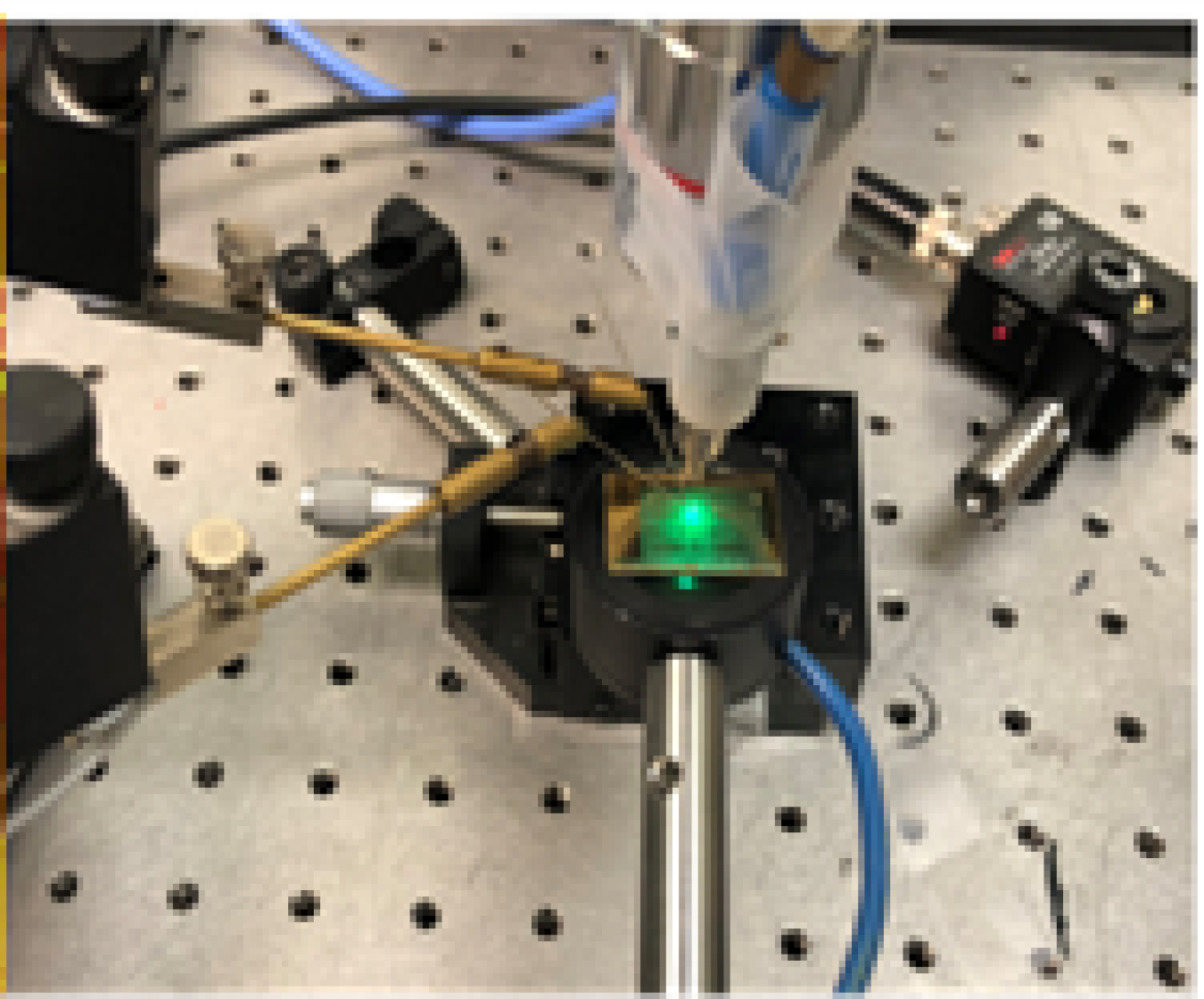
RF carrier dynamics measurements in progress on a Lumileds green LED wafer at the University of New Mexico laboratory.
Mixing color LEDs to achieve white light offers the highest theoretical maximum efficacy but presently lags far behind the efficacy of today’s phosphor-converted LEDs. In particular, large improvements in the efficiency of green LEDs are needed to make the color-mixing approach competitive. In the longer term, realizing color-mixing systems with color-tuning capabilities and high color quality will also require efficient yellow LEDs. Researchers at Lumileds, the University of Michigan, the University of New Mexico, Sandia National Laboratories, and Ohio State University are collaborating to investigate the most promising approaches to improve long-wavelength InGaN LEDs using state-of-the-art LED material.
This R&D project leverages the cross-functional capabilities of the different team members. Team members’ advanced LED characterization methods and predictive modeling calculations were used to design epitaxy optimization experiments more effectively, and accelerate the pace of internal quantum efficiency improvements. Ultimately, Lumileds plans to implement the novel device concepts capable of delivering efficiency breakthroughs with state-of-the-art LED material. Lumileds also has an unambiguous performance baseline, which allows clear comparison of the new concepts against the baseline and rapid understanding of the impacts of the implemented concepts.
To begin, characterization and modeling capabilities of the project partners were applied to explain some empirical trends in green LED characteristics. The relatively weak dependence of external quantum efficiency (EQE) on the quantum well thickness was attributed to increases in both the Auger and radiative matrix elements as the electron-hole overlap increases. The injection efficiency, previously assumed to be close to 100%, was identified as an important factor that limits EQE in relevant LED designs. These findings were leveraged to improve the power conversion efficiency from 24% (baseline) to 28% at the wavelength of 540nm at 35A/cm2 and 25°C. Ultimately, large improvements in forward voltage (Vf) as well as EQE droop will be needed to reach final project goals. So far, the team has demonstrated a new LED design with a Vf improvement from 3.4 to 2.9V. The aim of ongoing work is to understand and mitigate the tradeoff between Vf and EQE droop observed in experiments to date.
Progress has also been made toward optimizing InGaN LEDs for emission in the yellow-amber wavelength range. EQE of 15% was demonstrated for the wavelength of 570nm at 35A/cm2 and 25°C, with peak EQE exceeding 30%.
Work on alternative device concept paths is also proceeding, as the team narrows the range of ideas to be studied in the next year of the project. The internal quantum efficiency target values required to succeed with the violet-to-green photoluminescence conversion LED concept were quantified. Notable achievements in the cascade LED path of the project were the demonstration of a tunnel junction with voltage drop below 0.5V and a dual active region green LED with double the light output of the control LED. These achievements were realized with production-compatible epitaxy reactors at Lumileds.
The progress already achieved in this project represents initial breakthroughs in performance of green and amber LEDs, which have seen limited progress over the last decade despite significant R&D effort. This project is well positioned to continue making advancements, given the holistic project scope and complementary project team. Every subsequent advancement in green and amber LED performance enables additional applications for color mixed LED solutions to achieve higher system luminous efficacy and new benefits from color tunability. (June 2021)
Return to Research Highlights.

